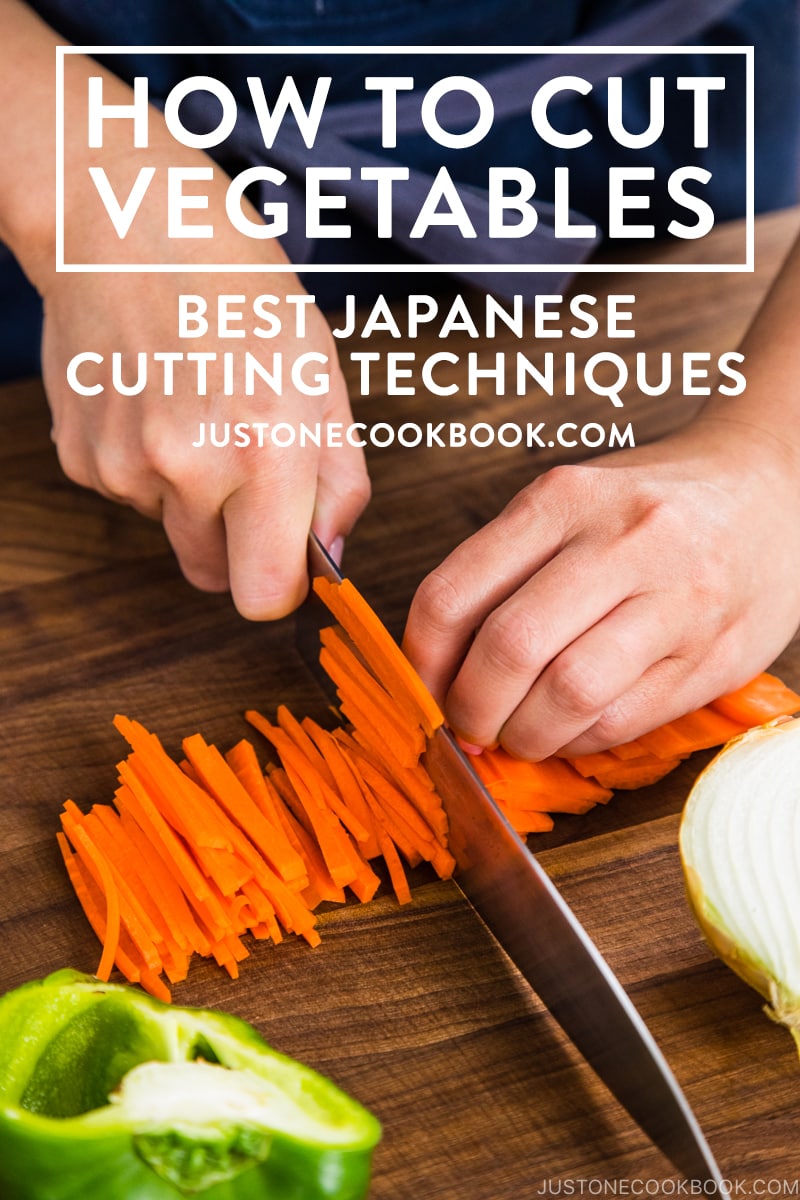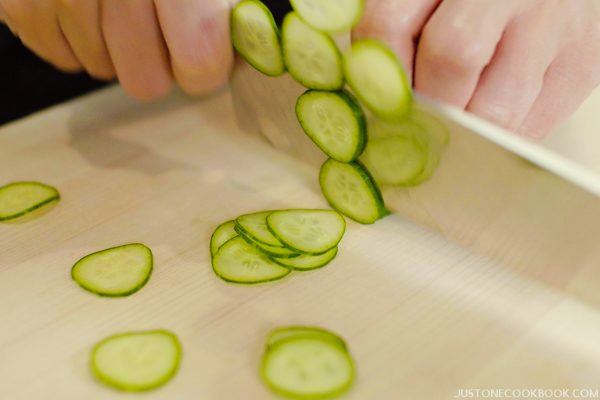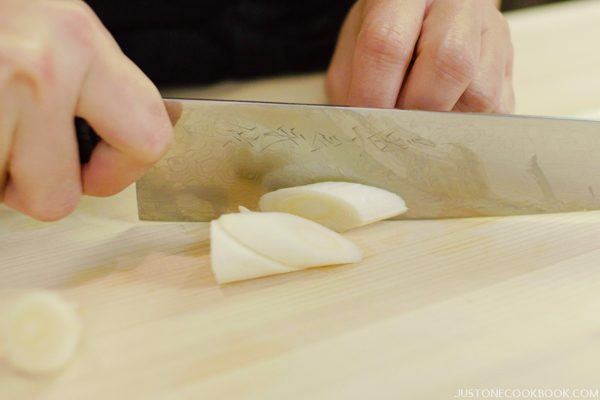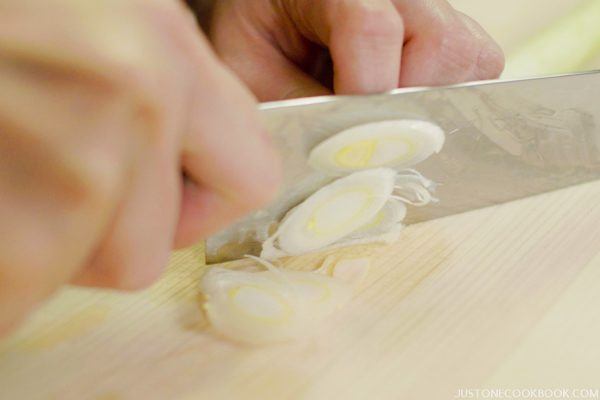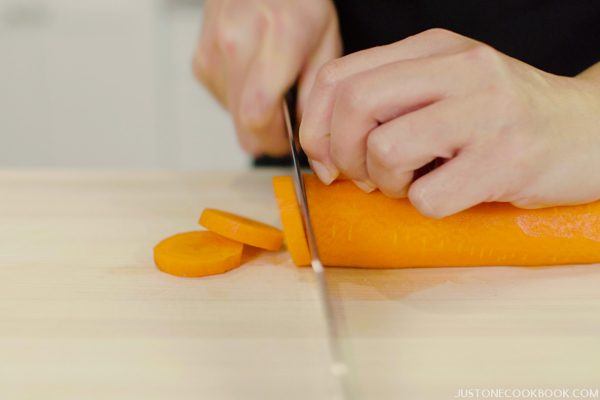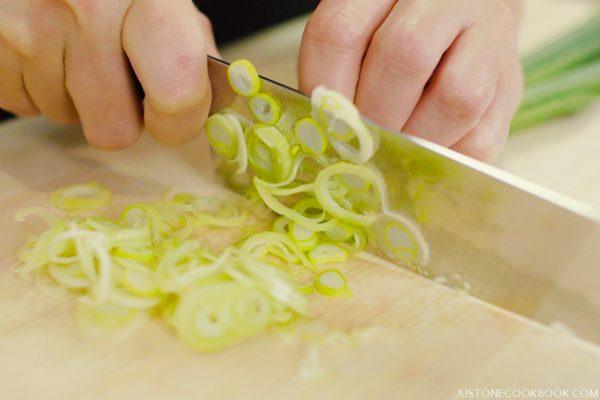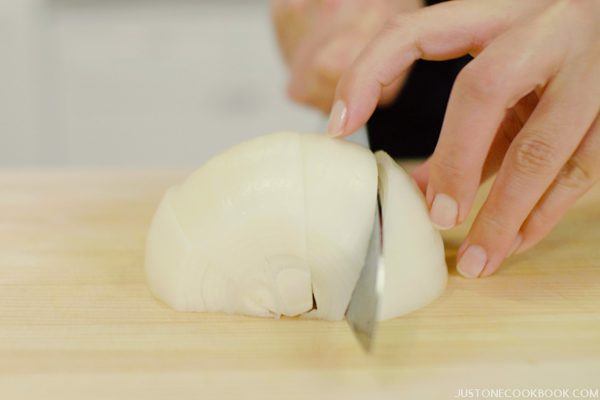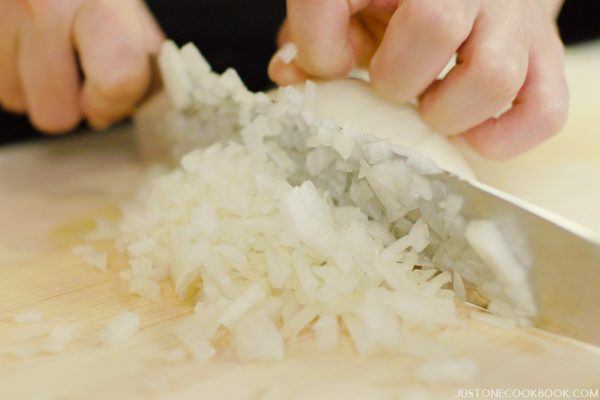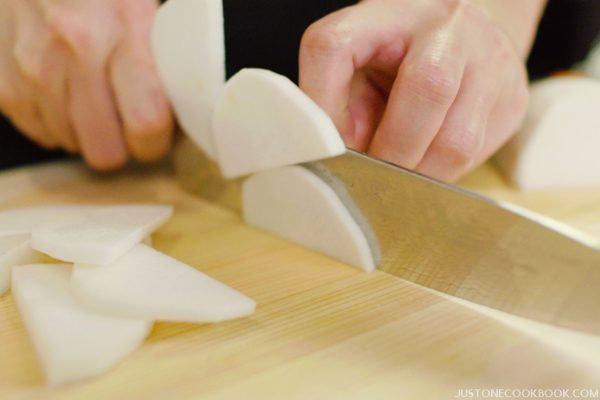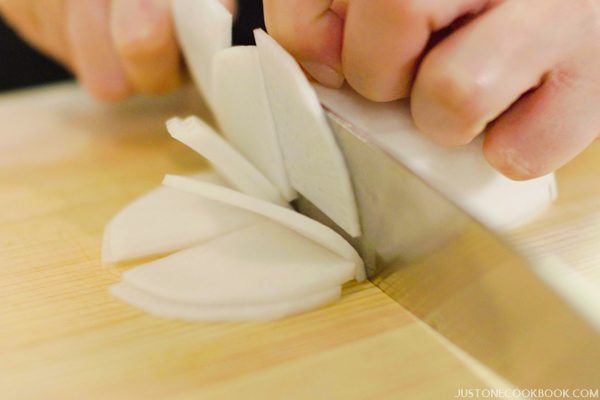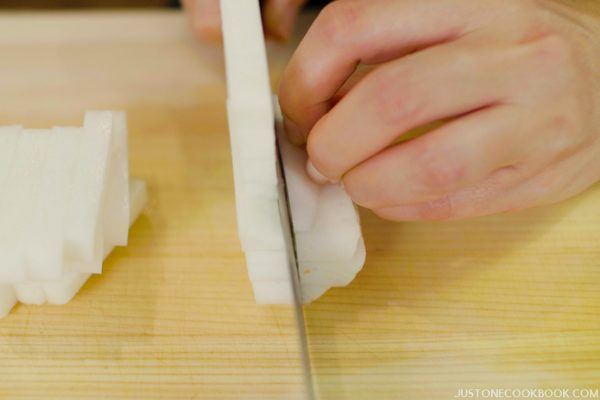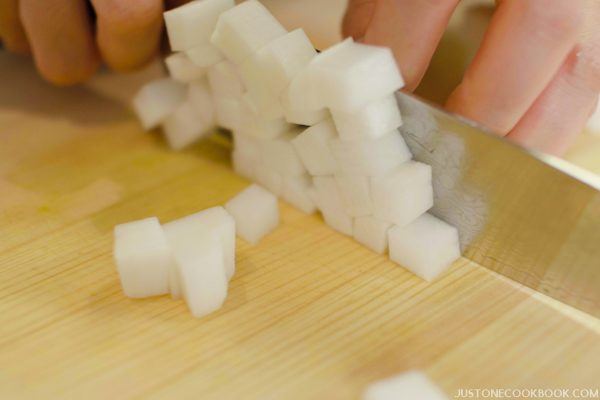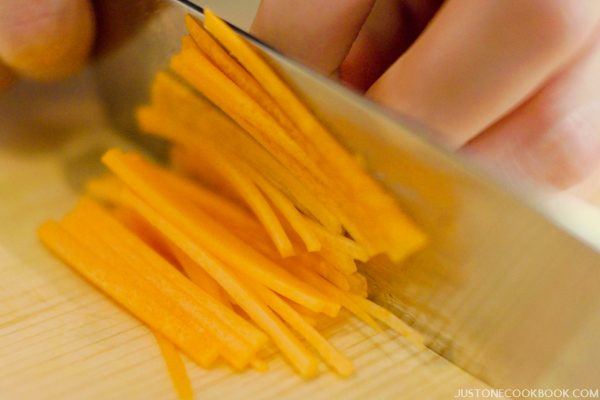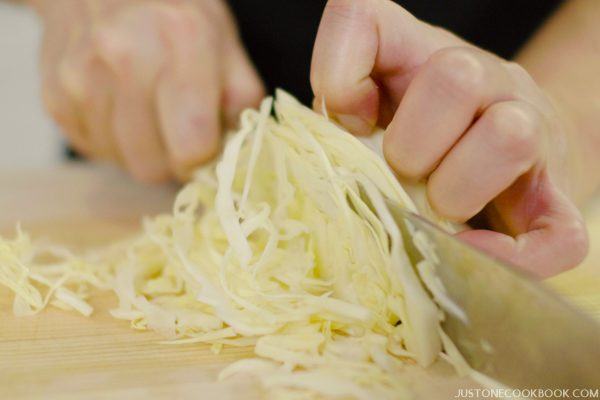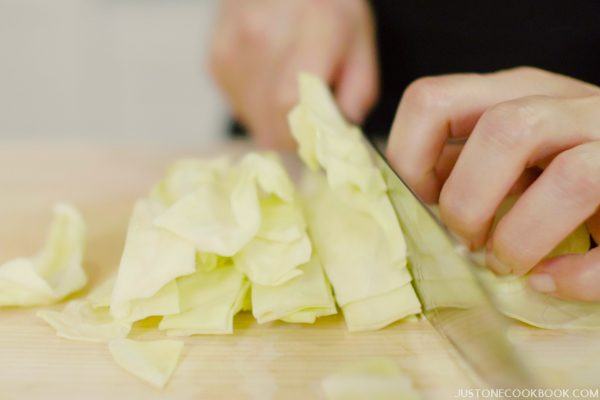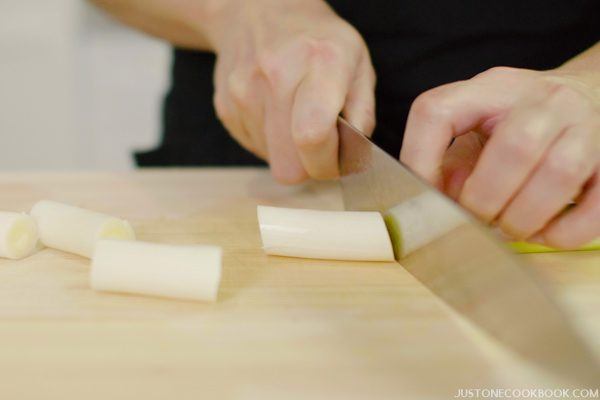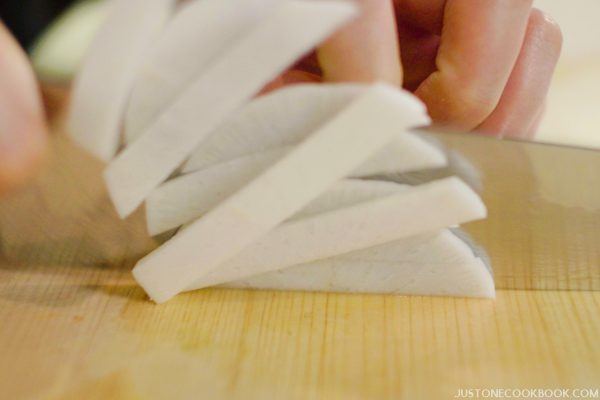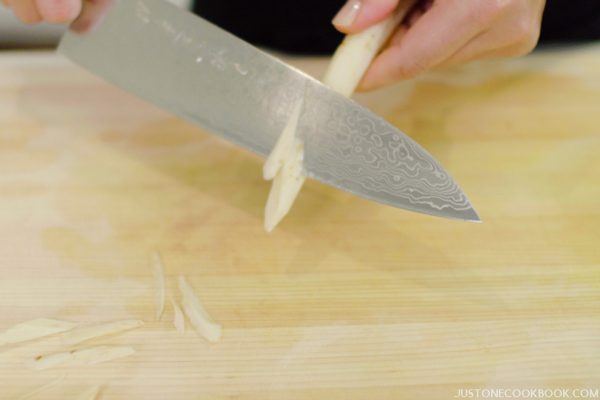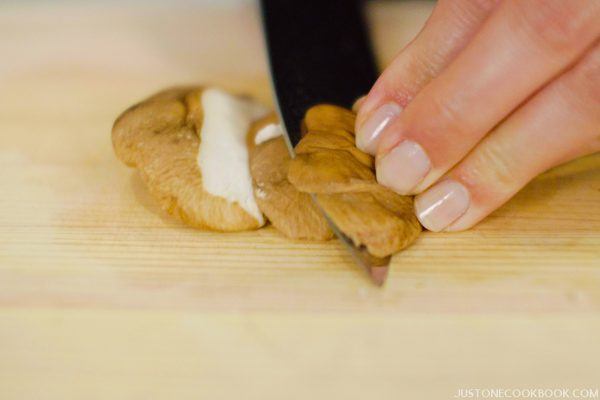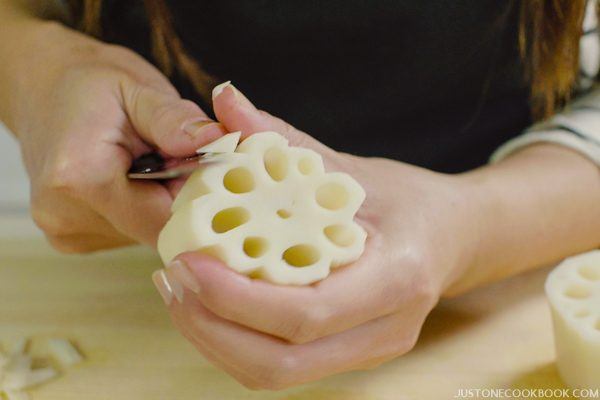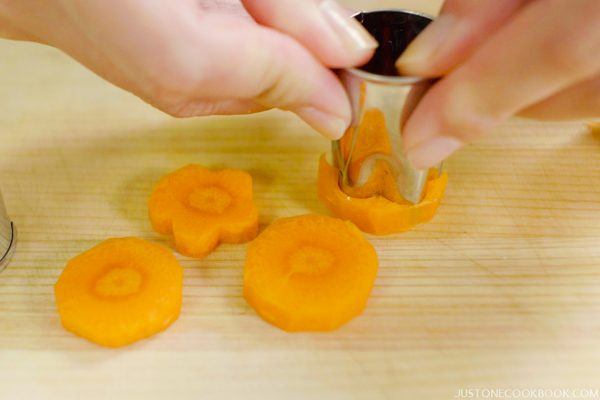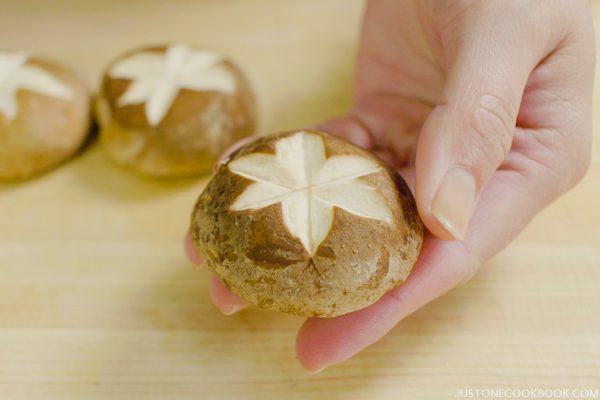Since I started sharing recipe tutorials on my YouTube channel, I’ve received a lot of feedback from my viewers and readers about the way I cut vegetables. Many of you told me you learned a lot about different Japanese cutting techniques from watching my videos. So Mr. JOC and I made a tutorial video compiling basic cutting techniques that the Japanese use in our daily cooking. This tutorial does not include every single Japanese cutting technique, especially if it is only used for specific dishes such as holiday recipes. However, we thought it’s fun to put together and share.
Video Tutorial: Japanese Cutting Techniques
The Japanese have specific names for Japanese Cutting Techniques. Cutting the vegetables a certain way accentuates their look, flavor, and texture.
What’s So Unique About Japanese Cutting Techniques
Most likely, you and I cut the tomatoes and slice cucumbers the same way. So what’s so unique about Japanese cutting techniques? There are some cutting techniques that are very specific to Japanese cooking, and certain dishes taste and look better when the ingredients are cut a certain way. However, you’ll notice for the most part that it’s the same way you cut. But what I realized is that we have a name for each cutting technique in Japanese cooking. It’s not descriptive words, such as “slice into 2 inches,” “cut into small chunks roughly,” or “slice diagonally and thinly”. Each name for Japanese cutting techniques describes the cutting styles precisely.
Basic Japanese Cutting Techniques
Usugiri (薄切り) – “Thin” Cut
Cucumber, ginger, onion, eggplant, garlic, negi (green onion)Crisp textureGood for stir fry, simmered dishes, salad, and pickled dishes.
Nanamegiri (斜め切り) – “Diagonal” Cut (Read more)
negiCut against grain/fiber diagonally
Naname Usugiri (斜め薄切り) – “Thin Diagonal” Cut
negi, celeryGood for salad
Wagiri (輪切り) – “Round” Cut (Read more)
cucumber, daikon, tomato, eggplant, carrot, lotus rootThickness varies depending on recipesGood for simmered dishes
Rangiri (乱切り) – “Random Shape” Cut (Read more)
carrot, cucumber, daikon, eggplant, lotus rootCut into random shapes, but the same sizeCreate more surface so it will cook faster
Koguchigiri (小口切り) – “Small Round” Cut (Read more)
negi, green onion, cucumberThickness varies depending on recipes but roughly 2-3 mm
Kushigatagiri (くし形切り) – “Comb Shape” Cut (Read more)
cabbage, onion, tomato, lemonCut into wedges
Mijingiri (みじん切り) – “Minced” Cut (Read more)
onion, carrot, ginger, garlic, negiCut into small pieces from Sengiri
Hangetsugiri (半月切り) – “Half Moon” Cut (Read more)
cucumber, daikon, tomato, eggplant, carrot, lotus rootGood for soups and simmered dishes
Ichogiri (いちょう切り) – “Gingko Leaf ” Cut (Read more)
daikon, carrotGood for soups and simmered dishes
Hyoshigiri (拍子 木切り) – “Long Stick” Cut (Read more)
daikon, carrotGood for stir fry and simmered dishesCut into 5 cm x 1 cm x 1 cm cubes
Sainomegiri (さいの目切り) – “Diced” Cut (Read more)
daikon, carrot, cucumberCut into 1 cm x 1 cm x 1 cmGood for soup and salad
Hosoghiri (細切り) – “Slender” Cut (Read more)
cucumber, gobo, potato, daikon, carrot, negi, bell pepperGenerally 4-5 cm x 3 mm
Sengiri (千切り) – “Thousand” Cut (Read more)
cabbage, ginger, daikon, carrotGenerally 6-7 cm x 1-2 mm
Zakugiri (ザク切り) – “Rough Chop” Cut
cabbage, green vegetables, tomato, chivesGenerally 3-4 cm widthRoughly chop, not in a uniform wayGood for stir fry and hot pot
Butsugiri (ぶつ切り) – “Chop” Cut
negi, celeryChop into a convenient size, usually 3 cm piecesGood for hot pot and simmered dishes
Tanzakugiri (短冊切り) – “Strip of Paper” Cut (Read more)
daikon, carrotGood for salad and soup
Sasagaki (ささがき) – “Bamboo Leaf” Cut (Read more)
gobo, carrot“Shave” as if you’re sharpening a pencil with a knife
Sogigiri (そぎ切り) – “Angle Slicing” Cut (Read more)
mushrooms, napa cabbageWorks best for thick (part of) ingredients and helps to cook faster and evenlySlice at a 45-degree angle
Hana Renkon (花レンコン) – Flower Lotus Root (Read more)
Lotus rootCut the lotus root into a flower shape
Kazarikiri (飾り切り) – “Decorative” Cut (Carrot, Shiitake Mushroom)
shiitake mushroom, carrot, lotus root,Flower shape on vegetablesUsed as an accent and decoration
Cutting Against or Along with Grain for Vegetables?
The texture of the vegetables will be different based on the direction you cut. If you want to leave a nice crisp texture, cut the vegetables in the same direction as the grain. If you want to make the vegetable tender, then cut across the fibers. If you cut parallel to the fibers/grain, the vegetable will be less wilted when being cooked. Does your cuisine have a name for all the cutting techniques? If it does, please share in the comment!
More on Cutting Techniques
How to Cut TofuHow to Cut an AvocadoHow to Butterfly Meat like Chicken Breasts or Fish Fillet)How to Slice Meat Thinly
Wish to learn more about Japanese cooking? Sign up for our free newsletter to receive cooking tips & recipe updates! And stay in touch with me on Facebook, Pinterest, YouTube, and Instagram.
